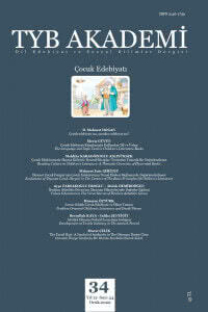Çanakkale Şehidlerine Şiirinin Yazılışı
"Çanakkale Şehidlerine şiiri" olarak adlandırılan Mehmed Âkif'in Safahat'ının 6. Kitabı Âsım'da yer alan bölüm, Türkiye'de en çok okunan ve ezberlenen metinlerdendir. Çanakkale tasavvurunu bir asırdır canlı tutan anıt şiirin yazılış zamanı ve hikâyesi merak konusudur. Bu hususla ilgili tek bilgi/iddia Cemal Kutay tarafından Necid Çöllerinde Mehmed Âkif kitabında hikâye edilmiştir. Cemal Kutay, bu kitapta yer alan bilgilerin Teşkilat-ı Mahsusa reislerinden Eşref Sencer Kuşcubaşı'na ait olduğunu "Elinizdeki kitap" başlıklı sunuşta belirtmekte ve metinde de sık sık onun ağzından nakiller yapmaktadır. Kitabın ilk baskısı Eşref Sencer Kuşçubaşı hayatta iken yapıldığına göre, yazarın tekzib edilme kuşkusu olmadığı tahmin edilebilir. Bu yazıda, Mehmed Âkif'nin 1. Dünya Harbi sırasındaki Arabistan görevi, bu görev sırasındaki temasları ve dönüş yolunda Çanakkale zaferi ile ilgili haberi alması üzerine yazdığı şiir çeşitli yönleri ile ele alınıyor.
How the "Poem: To the Martyrs of Çanakkale" was written Writing of Poetry "To the Martyrs of Çanakkale"
The verses from "Asım", 6th book of Safahat written by Mehmed Akif and called "To the Martyrs of Çanakkale" is one of the most read and memorized texts in Turkey. When and how the memorial poem, which has kept the image of Çanakkale alive for a century, was written is the issue of curiosity. The only information regarding this issue is given in Cemal Kutay's book which is entitled as "Necid Çöllerinde Mehmed Akif (Mehmed Akif in Najd Deserts)". In his intruduction titled as "Elinizdeki kitap (The book that you hold)", Cemal Kutay states that Eşref Sencer Kuşcubaşı who is one of the leaders of Teşkilatı Mahsusa (The Speacil Organization in Ottoman Empire) is the source of the information given by this book. And Kutay also often quoted on his promises in the text. Esref Sencer Kuşçubaşı was alive when the book was first published, so there is no doubt about the credibility of it. In this paper, Mehmed Akif's Arabia task during the 1st World War, his contacts during this mission and the poem he wrote after he had heard about the victory of Çanakkale are explained from various aspects.
___
- ISSN: 2146-1759
- Yayın Aralığı: Yılda 3 Sayı
- Başlangıç: 2011
- Yayıncı: Mustafa Ekici
Sayıdaki Diğer Makaleler
Suriye İlmî (Edebî) Heyeti'nin İstanbul ve Çanakkale Seyahati1
Çanakkale Edebiyatı ve Mehmed Âkif
Çanakkale Mahşeri Mehmed Niyazi, Ötüken Neşriyat, İstanbul, 2015 (1. Basım 1998) 535s
Çanakkale Şehidlerine Şiirinin Yazılışı
Çanakkale Muharebeleri ile İlgili Eski Harfli Tek Sayfalık Destanlar
Karagöz Gazetesi ve Punch Dergisindeki Karikatürlerde Çanakkale Muharebeleri
Kırım Göçlerinin Sonuçları: Mecidiye Kasabası Örneği
Suriye İlmî (Edebî) Heyeti'nin İstanbul ve Çanakkale Seyahati1
